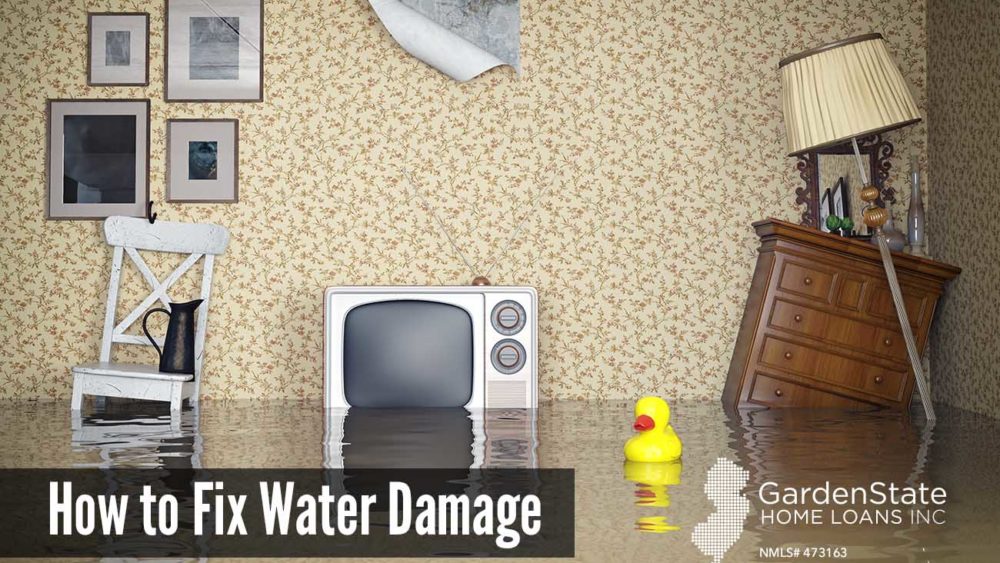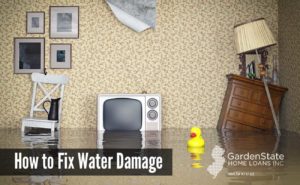Water damage is an issue that no one wants to deal with as a homeowner. Unfortunately, this is a situation that might become a reality to you. If it does, here are some ways to fix the damage once you spot it.
-
Move air naturally
- If the humidity isn’t too high outside, open your doors and windows to get air circulating. Open any closet and cabinet doors and remove any drawers.
-
Move air mechanically
- You can rent or buy high-powered fans to help air circulation. Fans can cost between $50 and $500 to buy or $20 a day to rent, depending on size. However, you should not use your air conditioner or furnace if your HVAC ducts were under water.
-
Pump water
- A sump pump is a submersible pump that moves water out of the house through a hose or pipe. If you have standing water that is more than a few inches deep, a sump pump can help to remove the water. A sump pump costs about $100 to purchase or $44 a day to rent.
-
Dehumidify
- A portable dehumidifier removes water vapor from the air in a contained area, like a bedroom. The room’s windows and doors should be shut to prevent more humidity from coming into the room. A big dehumidifier costs about $270 to purchase.
-
Wet/Dry Shop Vacs
- Some vacuums are used for wet conditions, which suck water from carpets. However, don’t use a normal vacuum! Normal vacuums are not protected from water and can ruin the vacuum.
-
Freeze papers
- Place wet books and photos into plastic bags. Afterwards, place the bags in a frost-free freezer. This stops any additional deterioration and prevents mold and mildew. Retrieve books from the freezer and air- or fan-dry the pages.
-
Remove soaked objects
- Move any wet rugs and furniture outside and into the sun to reduce the moisture level inside your room. Remove sheet vinyl or linoleum flooring. Finally, throw out any wet insulation under floors. This promotes maximum evaporation.
-
Clean and Disinfect
- Once water is removed, clean! Clean affected areas with a disinfectant, such as Lysol or Pine-Sol, and warm water.
-
Make repairs
- First things first, find the damage. If the drywall panels only show water damage, they may be repairable by cutting out the damaged portion. Use a keyhole saw to cut a hole in a rectangular shape. Measure the size of the hole you just made. Using these measurements, cut a replacement piece of drywall two inches longer and wider than the hole.
- Lay the replacement piece on a flat surface and measure in one inch from all sides. Using a straight edge and utility knife, cut through the backside of the paper and the drywall gypsum, being careful not to cut the front-facing layer of paper. Use a putty knife to peel away the backside paper and gypsum layer. When the area is completely dry, sand off any high areas. Prime and paint once finished.
-
Prevention
- Prevention is a key step to help stay on top of water damage. Three of the best ways to prevent water damage are spring cleaning, placing items high up, and using plastic bins.
- Spring Cleaning
- Basements often become the place things go when they have no other home. Once a year, take the time to go through your basement and get rid of the random clutter that builds up.
- Place items high
- Items placed on the floor can become a nightmare once water begins to rise. Getting items off the floor is a cheap solution to a future problem. When installing shelving, use metal or plastic shelving units.
- Plastic storage bins
- If you don’t have vertical space available, plastic or rubber bins are a great solution. It’s important to purchase secure tops for the bins in case the water comes from appliances or pipes above.



Comments are closed.